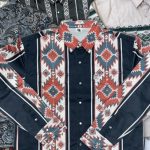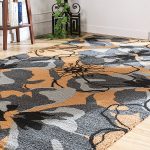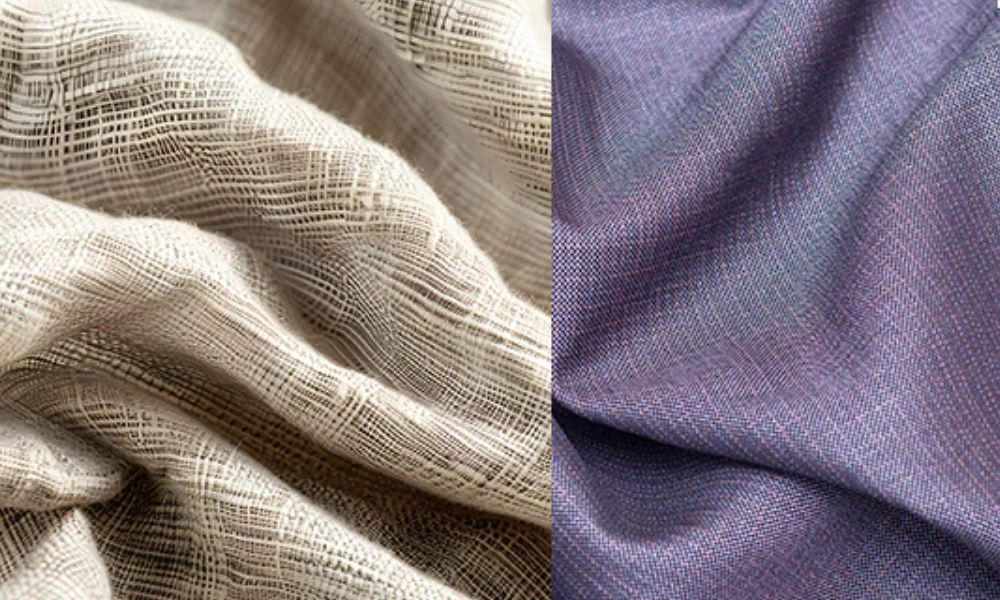Buying fabric online has become the new standard for fashion brands across the USA. Small designers, emerging brands, and established retailers now source materials from digital platforms rather than traditional wholesale showrooms. This shift offers unprecedented access to global suppliers and diverse fabric options, but it also presents unique challenges in maintaining quality standards.
This guide will walk you through the essential strategies for sourcing high-quality fabrics online. You’ll learn how to evaluate suppliers, assess fabric quality remotely, and build reliable sourcing relationships that support your brand’s success.
Understanding Fabric Quality: Key Factors to Consider
Quality fabric sourcing starts with understanding what makes fabric exceptional. When you buy fabric online, you can’t rely on touch and feel alone. Instead, focus on these critical quality indicators.
Fiber Content and Composition
The foundation of any quality fabric lies in its fiber content. Natural fibers like cotton, linen, and silk offer breathability and comfort, while synthetic blends provide durability and easy care. Cotton fabric by the yard remains a popular choice for many brands due to its versatility and consumer appeal.
Always request detailed fiber composition information from suppliers. A reputable vendor will provide:
- Exact fiber percentages
- Yarn count specifications
- Fabric weight in GSM (grams per square meter)
- Shrinkage rates after washing
Construction and Weave Quality
Fabric construction determines how well your finished garments will hold up over time. High-quality fabrics feature consistent weave patterns, proper tension, and minimal defects. Look for suppliers who provide detailed construction specifications including:
- Weave type (plain, twill, satin, etc.)
- Thread count per inch
- Fabric stability ratings
- Colorfastness test results
Supplier Certifications and Standards
Professional fabric suppliers maintain industry certifications that guarantee quality and safety. Look for certifications like OEKO-TEX Standard 100, GOTS (Global Organic Textile Standard), or CPSIA compliance for children’s wear.
Top Online Fabric Sourcing Platforms: Reviews and Comparisons
Fabriclore: Leading the Custom Fabric Market
Fabriclore stands out as a premier platform for fashion brands seeking customized fabric solutions. Their tech-enabled platform serves over 400 private labels globally, offering:
- Low minimum order quantities (MOQ) starting from 50 meters
- Custom design, dyeing, and printing services
- Comprehensive fabric range including cotton, viscose, rayon, linen, and sustainable options
- Transparent delivery tracking and exceptional customer support
- Competitive wholesale pricing with quality guarantees
The platform excels in providing cotton fabric by the yard with customization options that traditional suppliers often can’t match. Their streamlined ordering process and quality assurance make them particularly valuable for emerging designers.
Mood Fabrics: Designer-Quality Materials
Mood Fabrics has earned recognition through its association with “Project Runway” and maintains a strong online presence. They offer:
- High-end designer fabrics and deadstock materials
- Detailed fabric descriptions and care instructions
- Seasonal collections aligned with fashion trends
- Educational content and styling suggestions
Additional Sourcing Platforms
Several other platforms serve different market segments:
Textile Study Center provides educational resources alongside fabric sourcing options, making it valuable for designers who want to understand material properties better.
Cotton Incorporated offers comprehensive cotton fabric resources and connects buyers with certified cotton suppliers across the USA.
Apparel Resources combines sourcing opportunities with industry insights and trend forecasting, helping brands make informed material choices.
Tips for Evaluating Fabric Online: Ensuring Quality Without Seeing It in Person
Request Comprehensive Samples
Never place large orders without testing samples first. Professional suppliers will provide:
- Fabric swatches in various colorways
- Strike-off samples for custom prints
- Pre-production samples for quality verification
- Wash and wear test results
Analyze Technical Specifications
When you buy fabric online, technical specifications replace physical inspection. Pay attention to:
- Fabric weight and drape characteristics
- Colorfastness ratings for washing and light exposure
- Shrinkage percentages for both length and width
- Pilling resistance and durability ratings
Verify Supplier Credentials
Legitimate fabric suppliers provide transparent business information:
- Business registration and licensing details
- Production facility certifications
- Quality control process documentation
- Client testimonials and case studies
Use Color Management Tools
Color accuracy presents a major challenge in online fabric sourcing. Professional suppliers use:
- Pantone color matching systems
- Digital color approval processes
- Standardized lighting conditions for photography
- Color correction tools for accurate online display
Case Studies: Successful Fabric Sourcing Stories from Fashion Entrepreneurs
Case Study 1: Sustainable Streetwear Brand
A Los Angeles-based streetwear brand successfully sourced organic cotton fabrics through Fabriclore’s platform. By leveraging their low MOQ options, the brand tested multiple fabric weights and finishes before committing to larger orders. The result: a 40% reduction in fabric waste and improved profit margins through direct supplier relationships.
Case Study 2: Children’s Wear Startup
A startup specializing in children’s clothing needed CPSIA-compliant fabrics in small quantities. Through careful supplier vetting and comprehensive testing, they established relationships with three certified suppliers. Their systematic approach to quality control resulted in zero compliance issues during their first year of operation.
Case Study 3: Luxury Accessories Brand
A luxury handbag brand required specialty fabrics with unique textures and finishes. By working directly with suppliers who offered custom development services, they created proprietary fabric blends that became their signature selling point. The investment in custom fabric development increased their average selling price by 60%.
Leveraging Fashion Resources: How Online Tools Can Help with Fabric Selection
Educational Platforms and Resources
Multiple online resources support informed fabric selection:
Woolmark Learning Centre provides comprehensive education about wool fabrics and their applications. Their courses help designers understand fiber properties and make better sourcing decisions.
Textile Study Center offers detailed technical information about fabric construction, helping buyers understand quality indicators and specification requirements.
Cotton Works provides extensive resources about cotton fabric properties, care instructions, and application guidelines.
Technology-Enhanced Sourcing
Modern fabric sourcing benefits from technological tools:
3D Design Software like CLO 3D and Browzwear allows designers to visualize fabric drape and behavior before ordering. These platforms offer fabric libraries with realistic material properties.
Color Management Systems help ensure color accuracy across different devices and lighting conditions. Professional color calibration reduces costly mistakes in fabric selection.
Digital Fabric Libraries provide extensive databases of fabric properties, enabling designers to filter options based on specific requirements.
Ethical and Sustainable Sourcing: Options and Best Practices
Sustainable Fabric Options
Growing consumer awareness drives demand for sustainable fabrics. Key options include:
Organic Cotton: Grown without synthetic pesticides or fertilizers, offering environmental benefits and superior comfort.
Recycled Fibers: Post-consumer and post-industrial recycled content reduces environmental impact while maintaining quality.
Innovative Eco-Fibers: Materials like Tencel, Modal, and Ecovero provide sustainable alternatives to conventional fibers.
Supplier Sustainability Assessment
Evaluate suppliers based on:
- Environmental management certifications
- Water and energy consumption practices
- Waste reduction initiatives
- Worker safety and fair labor standards
Building Sustainable Supply Chains
Successful sustainable sourcing requires:
- Long-term supplier partnerships
- Transparent communication about sustainability goals
- Regular audits and performance monitoring
- Continuous improvement initiatives
Building Long-Term Supplier Relationships
Communication Best Practices
Effective supplier relationships depend on clear communication:
- Establish regular check-in schedules
- Maintain detailed specification documents
- Provide timely feedback on quality issues
- Share forecasting information to support planning
Quality Assurance Protocols
Implement systematic quality control:
- Pre-production sample approval processes
- In-line inspection procedures
- Final quality audits before shipping
- Continuous monitoring of quality metrics
Performance Metrics and Evaluation
Track supplier performance across multiple dimensions:
- Quality consistency and defect rates
- Delivery reliability and lead times
- Communication responsiveness
- Innovation and development capabilities
Mastering Online Fabric Sourcing for Quality and Success
Successfully sourcing fabric online requires a systematic approach that combines technical knowledge, supplier evaluation skills, and quality control processes. The key lies in building relationships with trusted suppliers who understand your quality standards and business requirements.
Start by identifying your specific fabric needs and quality parameters. Research potential suppliers thoroughly, request samples, and test their capabilities with small orders before committing to larger purchases. Platforms like Fabriclore offer the perfect starting point with their low MOQ options and comprehensive support.
Remember that quality fabric sourcing is an investment in your brand’s future. The time spent evaluating suppliers and establishing quality standards will pay dividends through improved product quality, customer satisfaction, and brand reputation.
Take action today by reaching out to potential suppliers, requesting samples, and beginning the process of building your fabric sourcing network. Your brand’s success depends on the quality of materials you choose, and online sourcing provides unprecedented access to global suppliers who can meet your needs.
Explore our diverse range of custom printed, ready mill-dyed, and yarn-dyed fabrics to find the perfect match for your next collection. For personalized assistance or inquiries, reach out to us at hello@fabriclore.com. Experience seamless, authentic, and affordable fabric sourcing with Fabriclore.




















